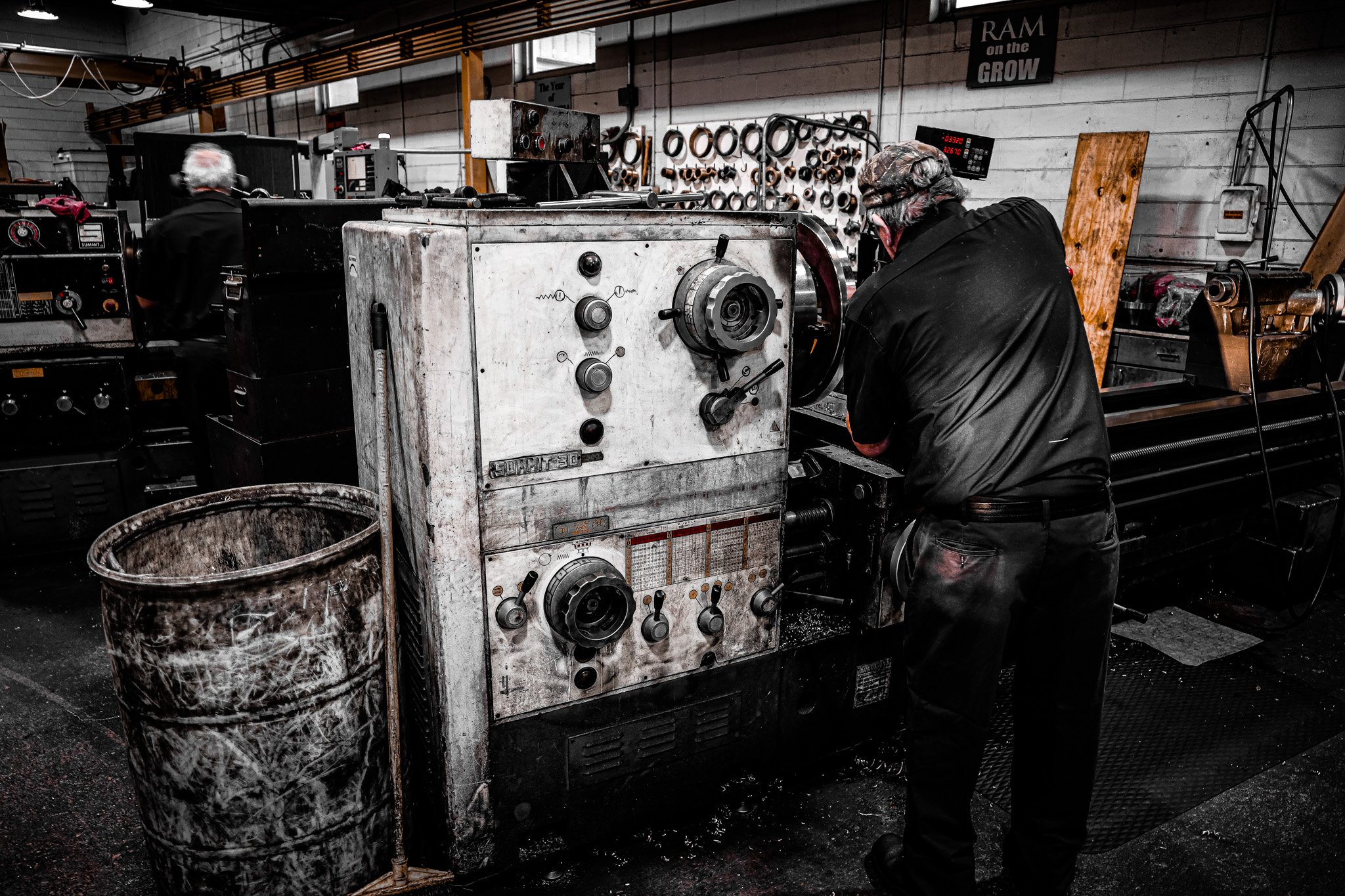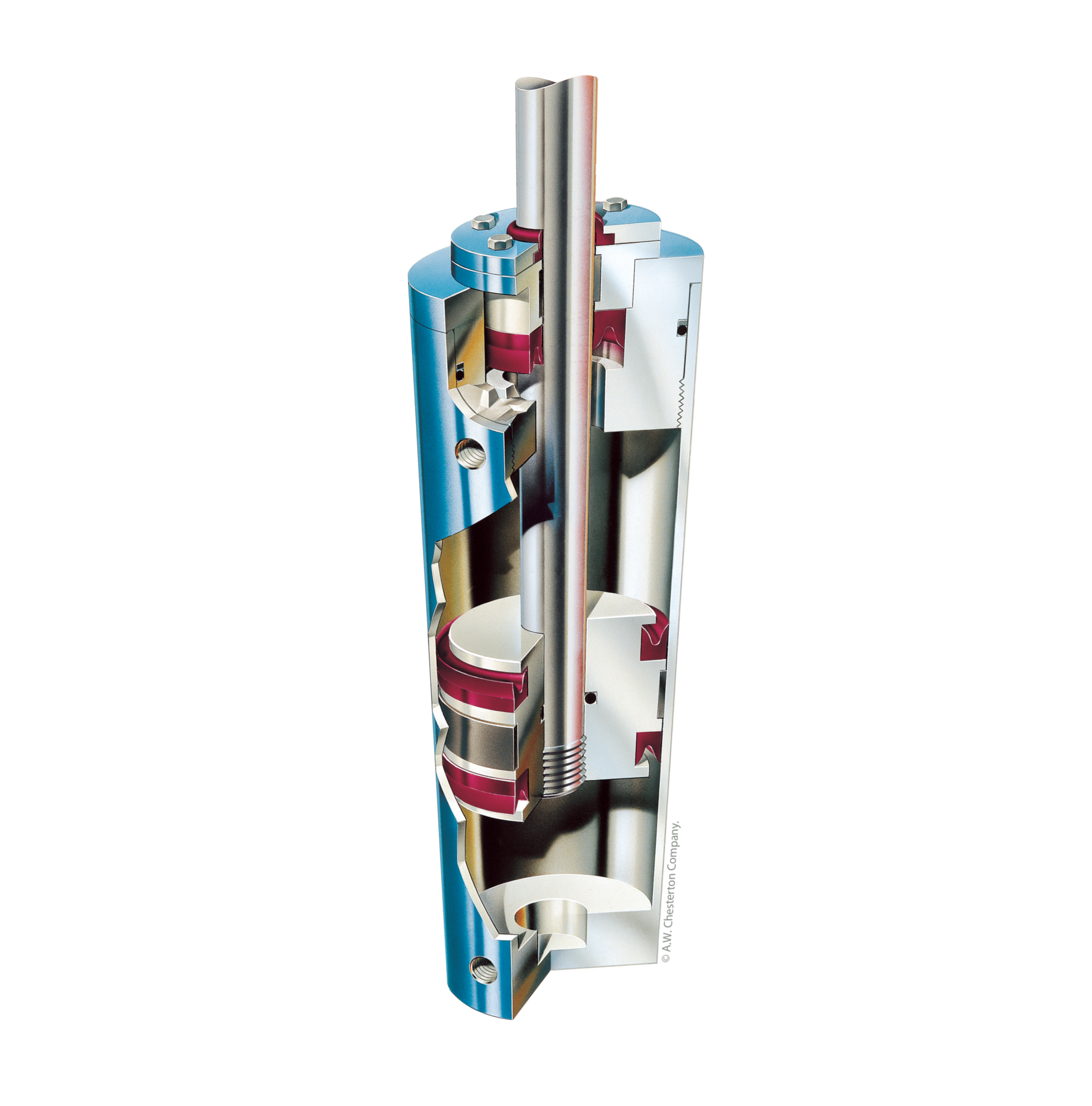
Hydraulics
Hydraulics
Many of the failures in a hydraulic system show similar symptoms: a gradual or sudden loss of high pressure, resulting in loss of power or speed in the cylinders. In fact, the cylinders may stall under light loads or may not move at all. Often the loss of power is accompanied by an increase in pump noise, especially as the pump tries to build up pressure.
Many major component - pump, relief valve, directional valve, or cylinder could be at fault. In a sophisticated system other components could also be at fault, but this would require the services of an experienced technician.
By following an organized step-by-step testing procedure in the order given here, the problem can be traced to a general area and then, if necessary, each component in that area can be tested or replaced.
STEP 1 - PUMP SUCTION STRAINER
Probably the first trouble encountered most often is cavitations of the hydraulic pump inlet caused by restriction due to dirt build-up on the suction strainer. This can happen on a new well as older system. It produces the symptoms described above: increased pump noise, loss of high pressure and/or speed.
If the strainer is not located in the pump suction line, it will be found immersed below the oil level in the reservoir, as at point A. Some operators of hydraulic equipment never give the equipment any attention or maintenance until it fails. Under these conditions, sooner or later, the suction strainer will probably become sufficiently, restricted to cause a breakdown of the whole system and damage to the pump.
The suction strainer should be removed for inspection and should be cleaned before re-installation. Wire mesh strainers can be best cleaned with an air hose, blowing from inside out. They can also be washed in a solvent that is compatible with the reservoir fluid. Kerosene may be used for strainers operating in petroleum base hydraulic oil. Do not use gasoline or other explosive or flammable solvents. The strainer should be cleaned even though it may not appear to be dirty. Some clogging materials cannot be seen except by close inspection. If there are holes in the mesh or there is mechanical damage, the strainer should be replaced.
STEP 2 - PUMP AND RELIEF VALVE
If cleaning the pump suction strainer does not correct the trouble, isolate the pump and relief valve from the rest of the circuit by disconnecting between relief valve from the rest of the circuit by disconnecting between relief valve and 4-way valve so that only the pump, relief valve, and pressure gauge remain in the pump circuit. Cap or plug both ends of the plumbing that was disconnected. The pump is now deadheaded into the relief valve. Start the pump and watch for pressure build-up on the gauge while tightening the adjustment on the relief valve are operating correctly, and the trouble is to be found further down the line. If full pressure cannot be developed in this test, continue with Step 3.
STEP 3 - PUMP OR RELIEF VALVE
If high pressure cannot be obtained in Step 2 by running the pump against the relief valve, further testing must be conducted to see whether the fault lies in the pump or in the relief valve. Proceed as follows:
If possible, disconnect the reservoir return line from the relief valve. Attach a short length of hose to the relief valve outlet. Hold the open end of this hose over the reservoir filler opening so that the rate of oil flow can be observed. Start the pump and run the relief valve adjustment up and down while observing the flow through the hose. If the pump is bad, there will be a full stream of oil when the relief adjustment is backed off. However, this flow will diminish or stop as the adjustment is increased. If a flow meter is available, the flow can be measured and compared with the pump catalog rating.
If a flow meter is not available, the rate of flow on small pumps can be measured by discharging the hose into a bucket while timing with the sweep hand on a watch. For example, if a volume of 10 gallons is collected in 15 seconds, the pumping rate is 40 GPM, etc.
If the gauge pressure does not rise above a low value, say 100 PSI, and is the volume of flow does not substantially decrease as the relief valve adjustment is tightened, the relief valve is probably at fault, and should be cleaned or replaced as in Step 5.
If the oil flow substantially decreases as the relief valve adjustment is tightened, and if only a low or moderate pressure can be developed, this indicates trouble in the pump. Proceed to Step 4.
STEP 4 - PUMP
If a full stream of oil is not obtained in Step 3, or if the stream diminishes as the relief valve adjustment is tightened, the pump is probably at fault. Assuming that the suction strainer has already been cleaned and the inlet plumbing has been examined for air leaks, as in Step 1, the oil is slipping across the pumping elements inside the pump. This can mean worn out pump, or too high an oil temperature. High slippage in the pump will cause the pump to run considerably hotter than the oil reservoir temperature. In a normal operation, with a good pump, the pump case will probably run about 20°F above the reservoir temperature. If greater than this, excess slippage, caused by wear, may be the cause.
Check also for slipping belts, sheared shaft pin or key, broken shaft, broken coupling, or loosened setscrew.
STEP 5 - RELIEF VALVE
If the test of Step 3 has indicated the trouble to be in the relief valve, the quickest remedy is to replace the valve with another one known to be good. The faulty valve may later be disassembled for inspection and cleaning. Pilot-operated relief valves have small orifices that may be blocked with accumulations of dirt. Blow out all passages with an air hose and run a small wire through orifices. Check also for free movement of the spool. In a relief valve with pipe thread connections in the body, the spool may bind if pipefittings are over-tightened. If possible, test the spool for bind before unscrewing threaded connections from the body, or screw in fittings tightly during inspection of the valve.
STEP 6 - CYLINDER
If the pump will deliver full pressure when operating across the relief valve in Step 2, both pump and relief valve can be considered good, and the trouble is further downstream. The cylinder should be tested first for worn out or defective packings.
Run the piston to one end of it stroke and leave it stalled in the position under pressure. Crack the fitting on the same end of the cylinder to check for fluid leakage. After checking, tighten the fitting and run the piston to the opposite end of the barrel and repeat the test. Occasionally a cylinder will leak at one point in it stroke due to a scratch or a dent. Check suspected positions in mid stroke by installing a positive stop at the suspected position and run the piston rod against it for testing. Once in a great while, the piston seal may leak immediately. This is usually caused by a soft packing or O-ring moving slightly or rolling into different positions on the piston. This is more likely to happen on cylinders of a large bore.
When making this test on hydraulic cylinders, the line should be completely removed from a cylinder port during the test. The open line from the valve should be plugged or capped since a slight back pressure in the tank’s return line would spill oil from the line if not plugged. Pistons, with metal ring seals, can be expected to have a small by-pass during break-in on new seals or after the seals are well worn.
STEP 7 - DIRECTIONAL CONTROL VALVE
If the cylinder has been tested (Step 6) and found to have reasonably tight piston seals, the 4-way valve should be checked next. Although it does not happen, an excessively worn valve spool can slip enough oil to prevent build-up of maximum pressure. Symptoms of this condition are a loss of cylinder speed together with difficulty in building up to full pressure even with the relief valve adjustment to a high setting. This condition would be more likely to occur with high-pressure pumps of low volume output, and would develop gradually over a long period of time.
For testing 4-way valves, with air or hydraulic, it is necessary to obtain access to the exhaust or tank return ports so that the amount of leakage can be observed. To make the test, disconnect both cylinder lines and plug the ports on the valve. Start up the system and shift the valve to one working position. Any flow out of the exhausts or tank return line while the valve is under pressure, is the amount of leakage. Repeat the test in all other working positions of the valve.
When re-installing the strainer, inspect all joints for possible air leaks, particularly at union joints. There must be no air leaks in the suction line. Check the reservoir oil level to be sure it covers the top of the strainer by at least 3” at minimum oil level, which is with all cylinders extended. If it does not cover to this depth, there is a danger of a vortex forming that may allow air to enter the system when the pump is running.
Helpful Information:
Trouble Shooting Help:
“The job’s not done right
until you say it’s done right.”
At RAM, we’re 100% committed to our customers and to their satisfaction.
Tell us about your project or of any questions you have.






